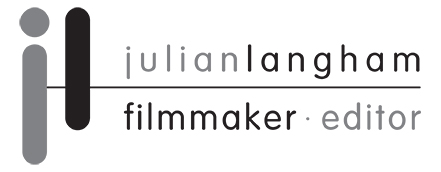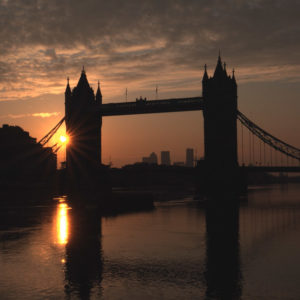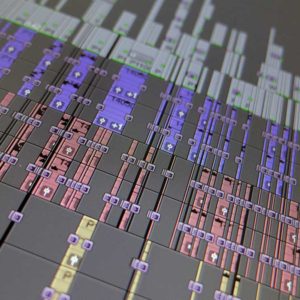Editing sync sound to build the essence of any kind or storyline is an essential craft skill for all film and video editors. In the case study, I explain the process for a short documentary I filmed and edited.

Editing together the structure of a story from the sound
The Strength & Vulnerability Bunker film was not scripted or storyboarded; it was more of an observational documentary-style. It was filmed as the actual events happened. To begin editing this type of film, I first transfer all the filmed rushes into my edit system and then spend time listening to all the sync sound. I then start to edit and assemble a long edit timeline of all the best sync sound as I listen to the clips.
Once I have listened to all the sync sound and have made the first extended edit of all the good bits of sync sound, I name this edit – edit one. After making the edit one timeline, I then make a duplicate of that edit and rename it edit two. I then start editing the edit two version of the timeline removing anything that is no longer needed for now – so reducing the duration of the overall edit. As I progress, I make another new editing timeline version (edit three) and so it continues. I always make edit changes and work on the latest edit version of the editing timeline. I can then always refer back to the original long edit timeline to re-introduce any audio or video which I may have been edited out previously. The more you listen to what sound is available the better you gain a sense of the strength of the story.
After I have edited and selected the most essential audio content, I progress to editing in a more detailed way. I begin moving the audio clips around away from their sequential order. Eventually, I edit these together to build a story that works with just the sync audio (of course keeping the associated vision attached to that audio on the video layer). There are lots of editing techniques that you can use to help tell the story, and you could add additional voice-over to enhance or help with telling the story if need be.

Editing lots of contributor sync
The process of editing down lots of contributor sync sound generally starts with a long compilation edit. As you then repeatedly listen to it, making additional edits along the way, you gain a sense of the story. Over time, as you lose the non-essential conversation and audio gaps, the duration of the edit timeline reduces. Next, when you have a good outline of the story in audio and roughly to time, you can start adding music tracks where appropriate – then building the different soundtracks into a more complete and finished work.
Editing takes time
As I am usually either the filmmaker or both the producer and cameraman on the projects that I film, I generally know where to find the best content on the filmed material. Even so, the process of editing this example film (and films like it) can take at least a couple of weeks depending on the final duration. There are so many different elements to consider for the client/s who may require the inclusion of additional details for the final version. If working with a producer who directs the edit, this process can be less time-consuming. The provision at the outset of a rough script outline, along with time-codes for the essential sync sound, would also enable the filming and editing to be a smoother and quicker process.
As the editing develops
As the editing timeline progresses and develops, you can start editing or painting the pictures over the audio bed. This helps to make the story edit work visually with cutaways and visual effects. You then have an edit timeline that works together, both visually and audibly.

One of the real joys for me in editing a film (like this one for The Koestler Trust) is in selecting the music for the edit. The many different artworks that are in the exhibition (featured in this film) are entries to the annual Koestler Awards. The Koestler Awards attract hundreds of musical entries (as well as thousands of visual and other art-forms). Each year, I listen to the vast majority of these new music tracks to select those which could be suitable for use for the films music tracks. Editing with music is a real passion of mine as is using the lyrics of a song. Music is a great tool to add pace, convey emotion and create depth to any story.
Delivering the edit
I delivered a polished first cut of this film to the Koestler Trust and viewed it along with their team. I was thrilled that (apart from some detailed text adjustments) they were delighted with my storyline and edit structure which had all come together in the edit. After the detailed adjustments and a further viewing for sign-off, the film was uploaded as a YouTube video and burnt onto DVDs. The DVDs were sent out to all the UK’s secure institutions so that the artists (who had submitted the artworks) could see their works as they had been displayed at the exhibition. I am sure this film will be a source of great inspiration, and I hope it encourages many detainees to continue to contribute to the annual Koestler Awards.
Please get in touch if you would like my assistance as a video editor or if you have any questions or would like advice on anything regarding your video production or post-production. This project was edited on Avid Media Composer.

If you have found this editing sync sound article useful, you may find these related articles of interest. For more advice and tips, check out my video production blog.
Resolving video audio syncing problems
You might be interested to read these video editing case studies:



